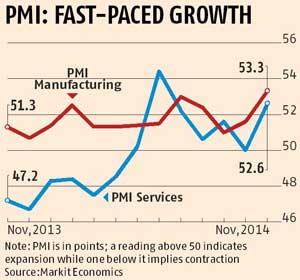Suraj wrote:The credit goes to the government, not Rajan. Rajan's simply following the same script from day 1. It's working now because the government is working. RBI's policies cannot work if Government does not allow them to work. There wasn't much RBI did wrong during UPA-1 and UPA-2, but those governments themselves did a lot wrong.
What we're seeing here is merely a synergistic positive development driven by RBI and GoI working together towards the same purpose, as opposed to being antagonistic rivals, as Chidambaram was with every incumbent RBI leader of his time. The current administration on the other hand, has had a positive relationship with the RBI.
Yes. Largely true. The RBI did it's job under Governors Y.V Reddi, D Subba Rao. In fact it did a very very good job, and Y.V Reddy, basically saved everyone's bacon by his far sighted actions during the go -go days prior to 2008 , and making the banks make loss reserves for their lending to real estate and other highly leveraged plays. The banks got away with that due to him. Unfortunately, in our current system, they allowed the govt's implicit guarantee to overcome their better judgements and allowed the banks to lend to the infra and power companies without similar loss reserves during the go-go days. That has shown up as big NPAs in the books of the PSU banks.
The UPA with Mukherjee as finance minister went back to it's old worst instincts of a 70s style command and control and goaded on by the NAC jokers went on a spending binge , with the idea of getting the Yuvraj and his brand of NAC type politics and spend away to utopia coronated. Unfortunately, the laws of gravity worked and you saw big fiscal deficits, and the macro economy going out of whack and that saw runaway inflation.
The UPA probably had to fight some serious internal ideological battles and the more pragmatist and level headed voices could be heard only when inflation became a serious headline problem and could not be controlled. Back came Chidambaram and the bitter pill of having to raise oil prices at a bad time and then going into the election with a legacy of bad economic management an serious inflation above 10% for close to 6 or 7 years running. With that kind of economic record, there was no way the Congress could have won, and at best could have hoped for a hung assembly, which mercifully didn't happen (I know, I would have preferred Congress winning), and it was kicked out clean.
The only danger was the Cow+Marx ideologues within the RSS who put a spoke in the first half of Vajpayee's term. It must be totally made sure that the Cow+Marx types don't come anywhere near serious economic policy and are restricted to fringe "nautanki" and "tamasha" like some odd self help schemes and stuff which does a lot of feel good and toffee throwing and nice headlines , but nothing substantive.

